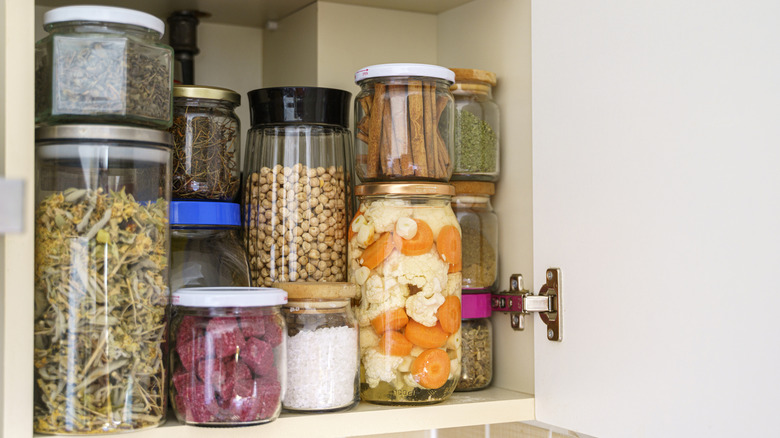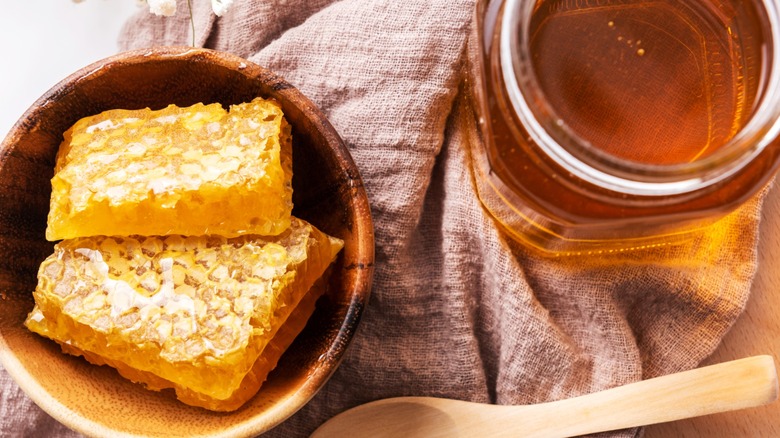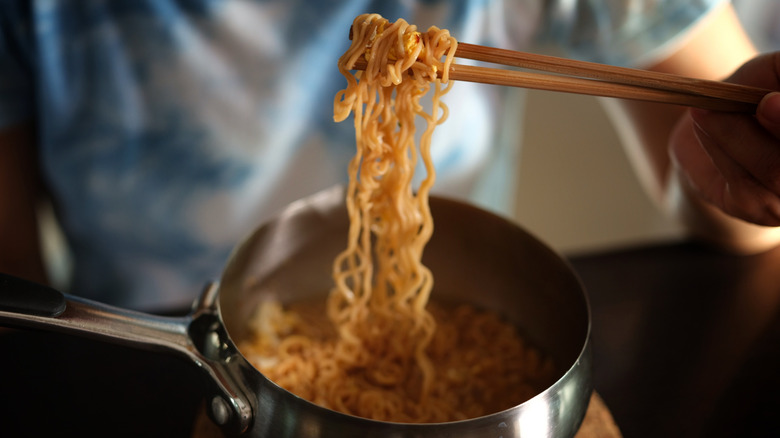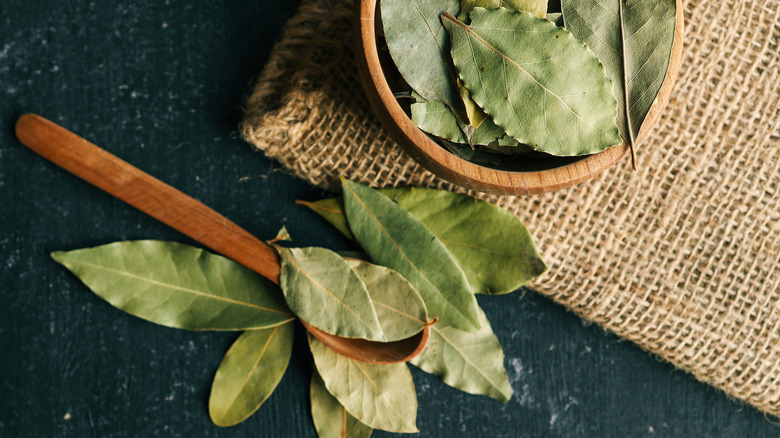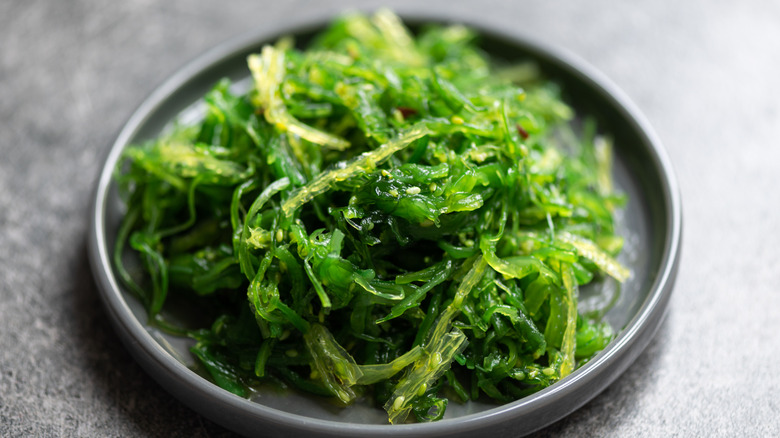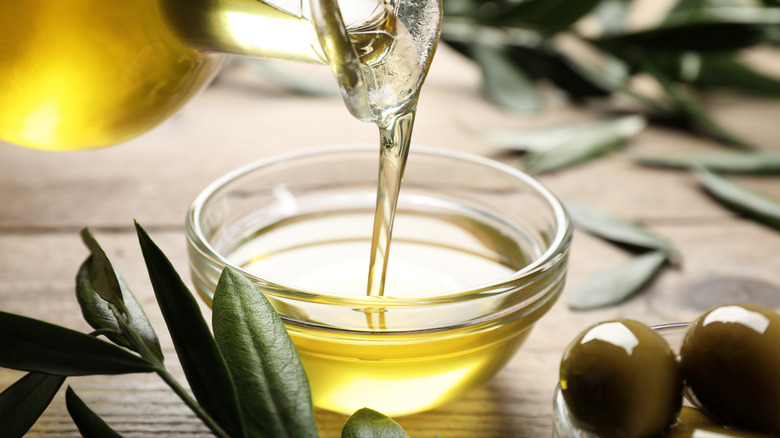We Asked Michelin Starred Chefs What's Always In Their Pantry
Michelin-starred chefs are the best in the industry. The star award that derived from Michelin Tires is often regarded as the highest honor a restaurant can receive. To earn this highly coveted recognition, chefs usually undergo years of training and preparation, but they must also bring a certain je ne sais quoi to the table. This creativity is what sets them apart from other fine dining professionals who don't quite make the cut. (Of course, there are plenty of star-worthy chefs in cities and countries that the Michelin Guide doesn't cover.) Whether they're working in their restaurant's kitchen, or cooking a simple meal at home, these chefs look to a few key ingredients to bring out the best flavor of every dish.
To help home cooks elevate their recipes, we asked six Michelin-recognized chefs which ingredients they always keep in their pantry. These icons of haute cuisine work in some of the most captivating Michelin-starred restaurants in the U.S. and Singapore (former home of the world's cheapest Michelin-starred restaurant), and bring expertise that represents a multitude of global cuisines. Although many of their recommended ingredients are specialized, most are easily attainable, simple to use, and affordable — and you might even already have some of them in your kitchen pantry!
Shiro dashi and honey
Donald Young, the Michelin-starred chef behind Chicago's Duck Sel, says of his go-to Japanese soup stock base, "A touch of shiro dashi in almost everything always makes it better." He seasons many of his dishes with this salty, smoky, and umami ingredient — but also regularly sweetens things up with honey. "There are so many different honeys that they can provide so many different nuances." He also substitutes sugar for honey, explaining that he loves "using it to make marshmallows to add complexion, or into my cakes to have an inert sugar to help maintain moisture after [they're] cooked and at room temperature."
Zero Acre oil, pomegranate molasses, and Tsuki Suiji-Mirin
Logan McNeil, chef de cuisine at the Michelin-starred Tambourine Room at Carillon Miami Wellness Resort, relies heavily on three ingredients in his restaurant kitchen. "We use Zero Acre oil for searing, frying, emulsifying, and making flavored oils." He also makes use of pomegranate molasses in sauces, adding, "As a chef, the sauce is my favorite part of any dish. I see the sauce as a component in which I can build nearly endless layers of flavor." He notes Japanese sweet cooking rice seasoning as another essential, describing Tsuki Suiji-Mirin as "balanced with umami flavors from koji mold. It has a rich aroma of sake and its natural amino acids enhance flavor."
Korean microwavable white rice, instant ramyun, hojicha, and honey
Chef Brian So, co-owner of the Michelin-starred Spring in Marietta, Georgia, is practical in stocking his pantry — especially when it comes to the convenience of microwavable rice. "In two minutes you can have a nice bowl of steamed white rice and all I have to do is fry up a couple eggs and eat with kimchi for a really quick meal [...] Instant ramyun is also a life saver." He confesses to being obsessed with tupelo honey, and says of his toasty Japanese green tea ritual, "I really enjoy drinking hojicha in the morning."
Portuguese EVOO, fresh garlic, onions, and dried bay leaves
Jessica Carreira, chef at the Michelin-starred Adega in San Jose, California, uses a few key pantry staples both at her restaurant and at home. "I always have a jug of Portuguese extra virgin olive oil, fresh unpeeled garlic, large yellow onions, and dried bay leaves in my pantry," she says. "About 90% of our recipes call for those ingredients so we always have them well-stocked. Unpeeled garlic is a non-negotiable item for me because the natural oils stay fresh when we chop at the beginning of the day. It takes a bit longer to prep but well worth it in the final outcome of the dish!"
Seaweed
Seth Lai, chef and owner at Ce Soir in Singapore, earned the 2024 Michelin Guide Singapore Young Chef Award. His restaurant also received a mention in the Singapore Michelin Guide. "My go-to ingredient would always be 'seaweeds,'" Lai says. "Naturally umami, [with a] hint of saltiness and sometimes mild in sweetness, its texture varies from chewy to crispy. This combination of sensory elements makes seaweed not only a fascinating organism but also a versatile ingredient in different cuisines."
Corto Truly EVOO and Maldon salt
Ferrell Alvarez is a chef and partner at Proper House Group, which includes Michelin Bib Gourmand-recognized Rooster & The Till, in Tampa, Florida. While he uses many vinegars and fresh spices, he can't go without Corto Truly EVOO and Maldon sea salt to finish a dish. "They just make things pop." As a third pantry staple, he adds, "I recently discovered Piccolo Datterini baby plum tomatoes that come in the chef's essential kit from Corto as well, and these have now become a staple. If you actually pair all three items together with a fresh basil leaf, it will blow your mind."
